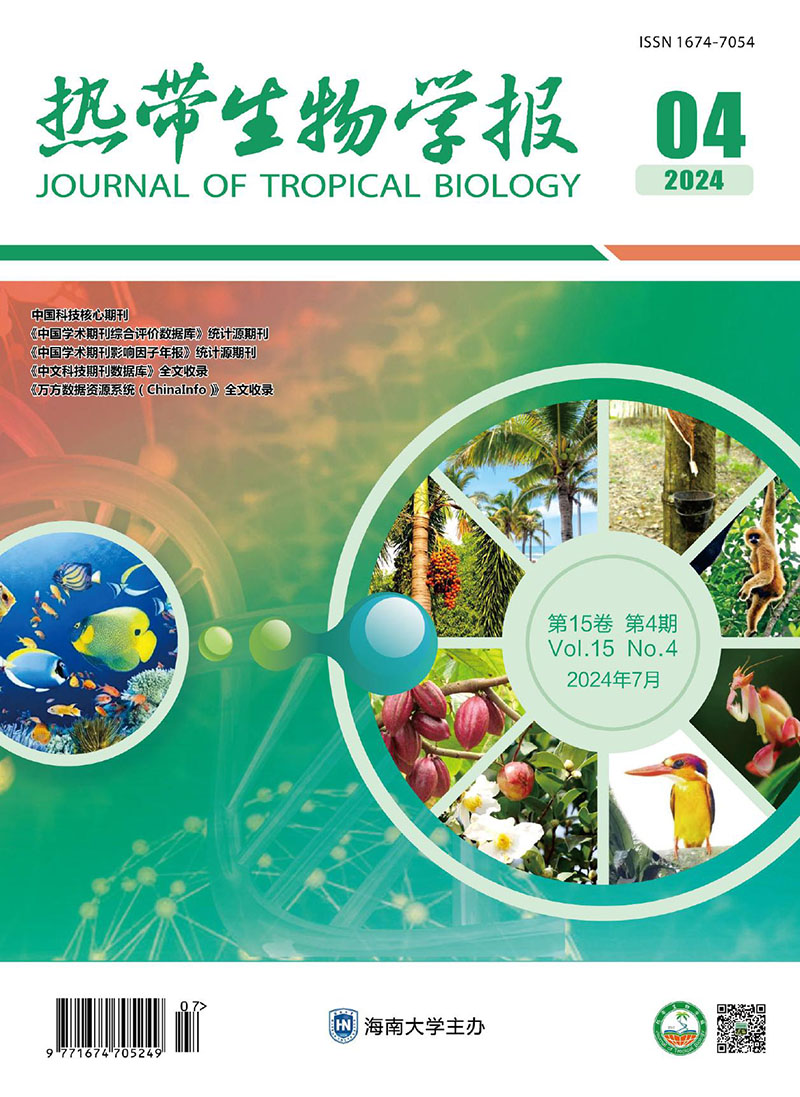|
[1]
|
罗凯,李泽生,白燕冰,等.石斛兰多样性利用及保护现状[J].黑龙江农业科学, 2021(8):85-89. |
|
[2]
|
GAGNÉR J. Contarinia maculipennis(Diptera:Cecidomyiidae), a polyphagous pest newly reported for North America[J]. Bulletin of Entomological Research, 1995,85(2):209-214. |
|
[3]
|
UECHI N, YUKAWA J, TOKUDA M, et al. New information on host plants and distribution ranges of an invasive gall midge, Contarinia maculipennis(Diptera:Cecidomyiidae), and its congeners in Japan[J]. Applied Entomology and Zoology, 2011, 46(3):383-389. |
|
[4]
|
ABE S, KOTAKA N, Takashima A, et al. Host selection and distribution of Dendrobium okinawense, an endangered epiphytic orchid in Yambaru, Japan[J]. Ecological Research, 2018, 33:1069-1073. |
|
[5]
|
TOKUDA M, YUKAWA J, YASUDA K, et al. Occurrence of Contarinia maculipennis(Diptera:Cecidomyiidae)infesting flower buds of Dendrobium phalaenopsis(Orchidaceae)in greenhouses on Okinawa Island, Japan[J].Applied Entomology and Zoology, 2002, 37(4):583-587. |
|
[6]
|
KOLESIK P, Gall midges(Diptera:Cecidomyiidae)of Australian cypress-pines, Callitris spp.(Cupressaceae), with descriptions of three new genera and three new species[J].Australian Journal of Entomology, 2000, 39(4):244-255. |
|
[7]
|
周慧,敖苏,李培征,等.入侵害虫康瘿蚊在海南省的发生危害调查[J].植物检疫, 2015, 29(1):57-60. |
|
[8]
|
国家市场监督管理总局,国家标准化管理委员会.斑翅康瘿蚊检疫鉴定方法:GB/T 36836-2018[S].北京:中国标准出版社, 2018. |
|
[9]
|
陈艳,张晓燕.石斛属植物主要害虫及其风险分析[J].武夷科学, 2002, 18:8-14. |
|
[10]
|
刘忠善,段歌涛,丁元明,等.云南口岸截获危险性害虫康瘿蚊[J].植物检疫, 2009, 23(2):39-41. |
|
[11]
|
郑文虎,龙琼华.海南三亚口岸国际热带兰花博览会截获植物疫情情况分析[J].植物检疫, 2015, 29(5):74-76. |
|
[12]
|
Gagné, R J. and Jaschhof M. 2014. A Catalog of the Cecidomyiidae(Diptera)of the World. 3nd Edition. Digital version 2.[EB/OL].(2014-01-01)[2017-12-16]. https://www. ars. usda. gov/ARSUserFiles/80420580/Gagne_2014_World_Cecidomyiidae_Catalog_3rd_Edition.pdf |
|
[13]
|
EBACH M C, HOLDREGE C. DNA barcoding is no substitute for taxonomy[J]. Nature, 2005, 434(7034):697. |
|
[14]
|
SCHINDEL D E, MILLER S E. DNA barcoding a useful tool for taxonomists[J]. Nature, 2005, 435(7038):17. |
|
[15]
|
贾晓旭,陆俊贤,唐修君,等.石岐鸽mtDNA Cytb基因遗传多样性分析[J].中国家禽, 2023, 45(2):117-120. |
|
[16]
|
邵仕芳,何鹏飞,吴毅歆,等.基于COI基因鉴定云南省43种蝇及其遗传关系分析[J].西南农业学报, 2022,35(2):373-379. |
|
[17]
|
高凯. NJ进化树构建方法的改进及其应用[D].北京:北京工业大学,2008. |
|
[18]
|
周慧,李培征,陈施明,等. 6种杀虫剂对康瘿蚊幼虫室内毒力测定及田间药效试验[J].南方农业学报,2015, 46(2):260-264. |
|
[19]
|
KAMALA I M. Crop diversification for sustainable management of blossom midge(Contarinia maculipennis felt)of Jasmine(Jasminum sambac L.)[J]. Indian Journal of Ecology, 2019, 46(2):371-377. |
|
[20]
|
ASKEEW R R, HARRIS K M. Chalcidoidea(Hymenoptera)reared from some gall-inducing Cecidomyiidae(Diptera)[J]. Entomologist’s Monthly Magazine, 2007,143(1721/1723):239-240. |
|
[21]
|
谈静惠,贺生芳,郭澍强,等. DNA条形码技术在植物检疫中的应用探究[J].南方农业, 2019, 13(3):187. |
|
[22]
|
李凯兵,吴志毅,刘海军,等.美国进境黑胡桃木中截获1种昆虫的分子鉴定[J].贵州农业科学, 2015,43(11):87-89. |
|
[23]
|
蔡佳,李井干,王富海,等. 6种检疫性菊科杂草籽的形态学和DNA条形码鉴定[J].中国口岸科学技术,2022, 4(9):55-61. |






 DownLoad:
DownLoad: